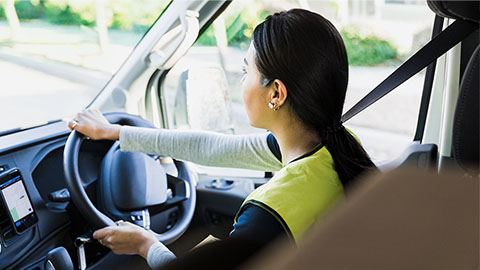The Power of Circular Management
Optimising Driver Risk Management. A blog brought to you by Driving For Better Business.

It’s not always obvious where to start with managing driver risk. After all, there are so many different areas that need to be tackled. How do we know whether what we’re doing is good or bad, or whether we have any glaring gaps? It’s easy to feel like we’re just going around in circles… which might actually be a good thing.
There is a simple (circular!) process that can help you, based on four easy-to-understand steps:
- Benchmarking – Do I need to improve?
- Gap Analysis – If I need to improve, where do I start?
- Action – How do I make improvements?
- Check – How big were the improvements?
Driving for Better Business has created a range of free online tools that can help you with all these key steps.
Benchmarking – This sits as the primary entry point to this process. By enabling organisations to see how they fare measured against key metrics universal within the industry, a lot can be revealed, against both a user average benchmark as well as a good practice benchmark. You should be looking to calculate and monitor over time the following calculations:
- Incidents per million miles
- Average cost per incident
- Average incident cost per vehicle
- Average maintenance cost per mile
- Average maintenance cost per vehicle
- Average fuel cost per mile
Gap Analysis – Step two involves a deep dive into your current policies and processes to highlight the areas that could deliver the required improvements to raise the organisation’s benchmarking scores. You should be looking to identify all the things that well-run fleets do – not just the legally required stuff, but the good practice management systems that deliver higher levels of performance.
As a minimum you should be looking at how the company manages driver risk and then in detail at the processes you have for managing drivers, vehicles, and journeys.
Action – How do we implement those new processes effectively? The resources on the Driving for Better Business website include tools, guides, advice, and examples of good practice. As well as information to help managers, one of the best new features is a whole section of resources dedicated to driver knowledge, including downloads, weblinks, and videos that can be shared with your drivers to raise awareness of important issues.
Having implemented the improvements and given them time to bed in, it’s time to return to the start of the circle and ask the final question. “How big was the improvement?” thus starting the process again. This process will help you to:
- Clearly compare your performance to others
- See where your priorities should be
- Confidently implement improvements
- Clearly see how well they worked
So, while you’ll still be going around in circles, at least they’ll be productive circles, and you’ll be doing it with the expectation that you and your fleet will be performing a little bit better each time around.
If you’d like to learn more about what you and your organisation should be doing and whether you have any gaps in your driver risk management, join our free programme at drivingforbetterbusiness.com. We have a wealth of free online tools and resources to help you understand where your priorities should be to reduce risk, control costs and improve efficiency
Subscribe to the Geotab Blog
The Geotab Team write about company news.
Subscribe to the Geotab Blog
Related posts

Strategic Implementation of Telematics for Optimising Last-Mile Delivery Operations
April 1, 2025
2 minute read




Geotab secures a spot in the Fleet News Reader Recommended in Telematics
May 16, 2024
4 minute read

